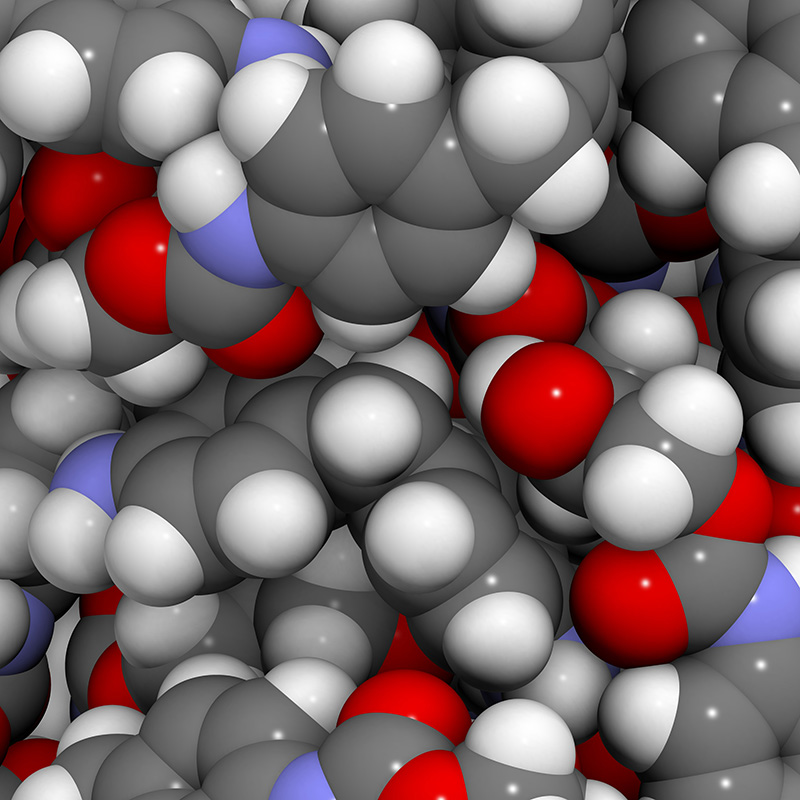Polymer synthesis is the process of creating molecules or macromolecules from small molecules, or monomers. It involves the linking together of monomers to form polymers. Polymers can have various properties, depending on the monomers used in their synthesis. Synthetic polymers are highly adaptable, which is one of the key reasons they are so useful.
By tailoring the structure of the polymer chains, scientists and engineers can create materials with a wide range of properties, which can be extremely important in the R&D process. This blog post will explore some of the advantages of polymer synthesis.
Key Advantages of Customized Polymer Synthesis
Here are four advantages of custom synthetic polymers that you should know:
Versatility
Synthetic polymers are highly versatile materials that can be used in a wide variety of applications. Some of the most common applications for synthetic polymers include packaging, construction, electronics, and textiles. In addition to their versatility, synthetic polymers also have several other advantages over traditional materials such as metal or glass.
For example, synthetic polymers are much lighter than metal or glass, making them ideal for applications where weight is a major concern. They are also resistant to chemical and physical damage, making them suitable for harsh environments.
For particularly difficult environments, the proper choice of monomers allows for customizing polymer properties where commercially available polymers will not perform adequately. In Product Development and other R&D processes, these customized properties can create improved performance and generate new arenas for commercial success.
Durability and Strength
Synthetic polymers are generally strong and durable materials that can withstand harsh conditions and last for extended periods. However, multiple factors contribute to the strength and durability of synthetic polymers. One of the most important factors affecting the strength and durability of synthetic polymers is the type of polymer, polymerization methods, and selection of monomers. These polymer design criteria determine the chemical structure of a polymer, and significantly impact its properties.
For example, polyethylene is a solid and durable polymer, while polystyrene is weaker. The type of polymer also determines the temperature range over which it can be used. Polyethylene can be used at temperatures as low as -60 degrees Celsius, while polystyrene begins to melt at around 80 degrees Celsius.
Desirable Flexibility
The desirable flexibility of synthetic polymers makes them ideal for a wide range of applications, from clothing and footwear to packaging and construction materials. This same property can also make recycling difficult, as they can lose shape and become entangled with other materials.
However, recent advances in polymer recycling technology have made it possible to recycle many types of synthetic polymers with minimal loss of performance or quality. In some cases, recycled polymers can even be used to create new products with superior properties.
Resistivity
Their chemical structure and molecular weight determine the resistivity of synthetic polymers. The most important factor influencing the resistivity is the degree of crystallinity, which varies from 0% to 100%. The resistivity of an amorphous polymer is usually several orders of magnitude higher than that of a crystalline polymer.
Other important factors include the degree of cross-linking, the presence of impurities, and the temperature. The resistivity of synthetic polymers generally increases with increasing temperature.
Bottom Line
The properties of synthetic polymers can be further enhanced by adding special monomers or additives to the polymer structure. These modifications can give the polymer flame-retardant properties, make it more resistant to UV light, or change the solubility, including imparting water solubility for improved degradation properties. By carefully selecting the right combination of monomers, polymerization techniques, and additives, R&D engineers can create materials with almost any desired properties, allowing for improved product design and performance.


